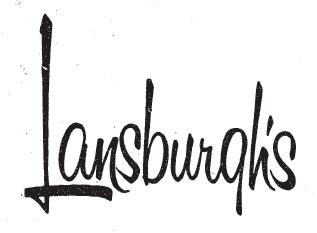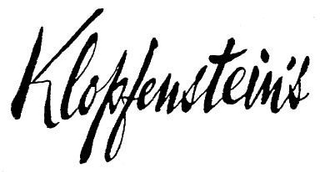
Toys "R" Us is an American toy, clothing, and baby product retailer owned by Tru Kids and various others. The company was founded in 1948; its first store was built in April 1948, with its headquarters located in Parsippany-Troy Hills, New Jersey, in the New York metropolitan area.

Tysons Corner Center is a shopping mall in the unincorporated area of Tysons in Fairfax County, Virginia, United States. It opened to the public in 1968, becoming one of the first fully enclosed, climate-controlled shopping malls in the Washington metropolitan area. The mall's anchor department stores are Macy's, Nordstrom, and Bloomingdale's. The mall also features prominent specialty retailers including Everlane, Fabletics, Untuckit, Oak + Fort, Intimissimi, Aesop, and Warby Parker.
Woodward & Lothrop was a department store chain headquartered in Washington, D.C. that began as the capital's first department store in 1887. Woodies, as it was often nicknamed, maintained stores in the Mid-Atlantic United States. Its flagship store was a fixture of Washington, D.C.'s downtown shopping district, competing with Garfinckel's and acquiring Palais Royal. The chain filed for bankruptcy in January 1994 and completed liquidation in November 1995, with most locations sold to either J. C. Penney or May Department Stores Company. The flagship building is a D.C. historic landmark that became the center of controversy over competing visions for DC's urban renewal after the chain's demise, and the former service warehouse in the city's northeast is also listed as a landmark.

Penn Quarter is a historic neighborhood of Downtown Washington, D.C., located north of Pennsylvania Avenue, in Northwest D.C. Penn Quarter is roughly equivalent to the city's early downtown core near Pennsylvania Avenue and 7th Street NW, Penn Quarter is an entertainment and commercial hub, home to many museums, theaters, cinemas, restaurants, bars, art galleries and retail shops. Landmarks include the Capital One Arena, the National Portrait Gallery, and the Harman Center for the Arts, among others. The area is also home to a popular farmers market and several food, wine, art, and culture focused festivals.
Allied Stores was a department store chain in the United States. It was founded in the 1930s as part of a general consolidation in the retail sector by B. E. Puckett. See also Associated Dry Goods. It was the successor to Hahn's Department Stores, a holding company founded in 1928. In 1935 Hahn's was reorganized into Allied Stores.

Magruder's is a grocery store and former chain in and around the Washington, D.C. metropolitan area, founded in 1875.

Shoppers Food & Pharmacy, also known as Shoppers Food Warehouse, is a chain of 22 supermarkets located in the Baltimore and Washington, D.C., metropolitan areas. Shoppers has fresh produce, Swift Angus beef, Smithfield natural pork, all-natural chicken, Dietz & Watson delis, fresh seafood, steamed shrimp, as well as hot food bars.
The Mall at Prince George's, formerly known as Prince George's Plaza, is an enclosed regional shopping mall located in Hyattsville, Maryland, at the intersection of Belcrest Road and East-West Highway. It is served by a Washington Metro station, Hyattsville Crossing. This station is on the Green Line. Located across Belcrest Road from the Mall is the University Town Center mixed-use development.
Filene's Basement, also called The Basement, was a Massachusetts-based chain of department stores which was owned by Retail Ventures, Inc. until April 2009 when it was sold to Syms.

Garfinckel's was a prominent department store chain based in Washington, D.C. that catered to a clientele of wealthy consumers. Its flagship store at 14th and F in the city's F Street shopping district is listed on the National Register. It filed for Chapter 11 bankruptcy in June 1990 and ceased operations that year.
Best & Co. was a department store founded in 1879 by Albert Best in New York City. The company initially sold clothing for infants and children, but later expanded to women's clothing and accessories. It was known for its "tastefully styled and proper women's clothes and its sturdy children's wear." Philip Le Boutillier served as president during the late 1930s. The store had expanded to 20 branches by 1966, when the company was acquired by McCrory's, who also operated Lerner Shops and S. Klein. In late-1970, McCrory's liquidated the company. At the time of its closing, the store had 1,200 employees.

Lansburgh's was a chain of department stores located in the Washington, D.C. area. The clientele were middle-income consumers.

The Village at Shirlington opened as Shirlington Shopping Center in 1944, and was the first large shopping center to open in the Washington, D.C. suburbs and one of the earliest in the United States. It is located along Campbell Avenue at the intersection of Shirley Highway and Quaker Lane / Shirlington Road in Arlington, Virginia. The center has been known since the mid-1980s as The Village at Shirlington.

S. Kann Sons Co., or more commonly Kann's was a department store based in Washington, D.C. It was the city's second department store and pioneered the one-price policy and "the customer is always right" concept in retailing on the Washington, D.C. retail scene. The stores allowed consumers to return goods for cash.

B. Kuppenheimer & Co., or simply Kuppenheimer, was a men's clothing manufacturing and retail operation based in Chicago, Illinois and later Atlanta, Georgia.

The Shops at National Place was a three-level, indoor shopping mall located in downtown Washington, D.C. in the 16-story National Place Building. It is located on the block bounded by Pennsylvania Avenue, F Street, between 13th and 14th Streets NW, the former site of the Munsey Trust Building. It was located near the Metro Center station of the Washington Metro system.

Klopfenstein's was an upscale men's clothing store in the Seattle-Tacoma Metropolitan Area founded in 1918 in Tacoma, Washington. Stores were operated in most of the area's major shopping malls as well as stores in downtown Tacoma and Seattle, across the street from Frederick & Nelson's flagship store. It was owned by Hartmarx from the late 1960s until its closing in 1992.
Dash's Designer, more commonly called Dash's, was an off-price, high-end men's clothing store chain based in Washington, D.C., Georgetown, Maryland, and Tysons Corner, Virginia.
Silverwoods, originally promoted as F. B. Silverwood, after its founder, was a men's clothing store chain founded in Los Angeles in 1894 by Francis Bernard Silverwood, a Canadian-American originally from near Lindsay, Ontario. He was a colorful character covered in the newspapers, a "songster" composer of popular songs, Shriner, and who famously married in 1920.

Parts of F Street and 7th Street, N.W. and nearby blocks have historically been the heart of the Washington, D.C. Downtown shopping district. In the first half of the 20th century there were numerous upscale large department stores along and near F Street, while 7th Street housed more economical emporia and large retail furniture stores. The F street corridor stretches west from Downtown's Penn Quarter and Gallery Place towards 15th Street, while the 7th Street corridor includes the neighborhoods of Penn Quarter, Chinatown and Mount Vernon Square, and extends up to the border of Shaw.












